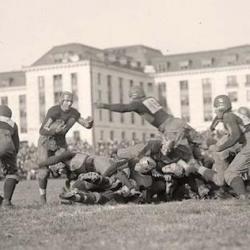So Kobe’s done, going out in grand style with 60 points as he led the Lakers to a comeback win. Few sports stars go out with as much fanfare, or do as well in playing up to the hype.
But the debate about Kobe’s greatness will continue, and his last game shows why. He scored 60, but it took him 42 minutes and 50 shots to get there. Next door at ESPN, Steph Curry gets plays 30 minutes, takes half as many shots, and scores 46. The slam against Kobe – his inefficiency and ballhoggishness – were front and center.
The Economist, which does not usually cover basketball, gives the case for the defense. Efficiency measures, it is argued, isolate individual players from their teammates and defenses, and can’t measure the disruptive effects of a great offensive threat: “efficiency statistics severely underestimate the contributions of dynamic offensive players who can create their own shots and force opponents to react. Using this interpretation, the reason why Mr Bryant is only moderately efficient is that he draws a disproportionate share of attention from defenders, thus enabling his teammates to get better looks at the basket—a trade-off often referred to as the ‘usage-efficiency curve.’” The theory is that “Only by proving to opponents that one man cannot guard him effectively—a demonstration that may require a few missed shots—can a team’s top scoring option force other defenders to abandon their men in order to help cover him.”
Plus-minus stats are used to raise questions about Kobe’s contributions to the Lakers: “Mr Bryant in for a league-average player would have improved a team’s scoring by 5.83 points per 100 possessions. That is an outstanding mark, enough to transform a middling club into a low-end title contender. However, it is not quite consistent with Mr Bryant’s image as the foremost offensive player of his generation.” Steve Nash, Chris Paul, and Lebron all have higher plus-minus numbers. But the Economist isn’t letting this go, arguing that the plus-minus may sell Kobe short. The note “the difficulty of disentangling the impact of teammates who almost always play at the same time and point to Derek Fisher as an example: Plus-minus stats suggests that “Mr Fisher as something of a hidden star: his score of 2.93 is comparable to those of big names like Chris Bosh and [Pau] Gasol.” But it’s not what it seems: “Suspiciously, Mr Fisher posted some of his lowest annual RAPM marks from 2004-07, precisely the three seasons when he was not on the Lakers. Is RAPM assigning credit to Mr Fisher that rightly belongs to Mr Bryant? If so, Mr Bryant should shoot up the rankings.”
The Economist concludes: “guards depend on quickness and tend to lose a step by their early 30s. But Mr Bryant, whose conditioning and work ethic are legendary, was essentially the same player at age 34 that he was at 20, and every year in between.” Which leads to this counterintuitive implication: “No one, least of all Mr Bryant himself, would consider him an exemplar of the aphorism that slow and steady wins the race. But the data strongly suggest that Black Mamba was far more of a tortoise than a hare.”











